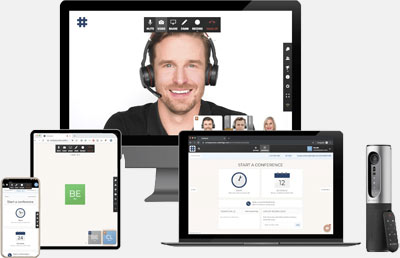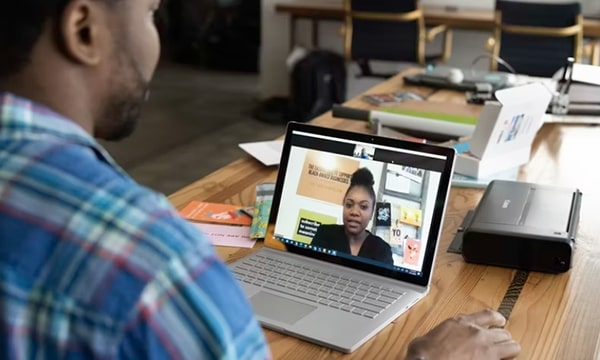The 5% rule is an HR and staffing rule. Hire to raise the mean of the team, each and every time you hire. Hire the smartest candidates you interview – the top 5%.
Microsoft sees, on average, 14,000 resumes per month. Of those, less than 100 are hired. The company could grow much faster, but doesn’t. Instead, it relentlessly focuses on the quality of the candidates and hiring only the very brightest it can get. As Dave Thielen, a former Microsoft development lead puts it, “The single most important contributor to productivity is the quality of the employees. Everything else is secondary.”
Aside from the fact that a lot of people want to work at Microsoft, which lets Microsoft pick and choose among the available candidates, how do they do it? Interview questions are legendary, and the process itself is grueling. The most important factor in the Microsoft interview process is the idea of using the whole team to interview. Candidate interviews are conducted by a selection of peers, and management. The process consists of several steps.
- Initial candidate selection is done by a combination of HR screening resumes, telephone screening interviews, and on-campus recruiting interviews at universities and colleges.
- From these initial candidates, the hiring manager will select a subset of three or four potentials to interview at Microsoft headquarters.
- On the interview day, HR and the hiring manager will select a group of three to six interviewers, including one senior interviewer designated as the “as appropriate”. The day is a packed schedule of individual one-hour long interviews. Someone will take the candidate to lunch, which is a 90-minute slot, but this is still an interview. There may also be a dinner.
- At the conclusion of each interview, the interviewer returns the candidate to the building lobby and then writes detailed feedback on the interview in an email. The feedback mail begins with one or two simple words – either HIRE or NO HIRE. This mail is then sent to the HR representative responsible for the candidate.
- By early afternoon, the HR representative makes a call on whether or not the candidate will meet the “as appropriate” interviewer, depending on how the interviews have been going. This interviewer has final say on whether or not the candidate is made an offer or not.
Typically, each interviewer will have specific characteristics that they are interviewing for – drive, creativity, bias for action and so on. The feedback mail will highlight the interviewer’s impression of the individual based on those characteristics, plus any other characteristic which the interviewer thinks are notable about the candidate. The interviewer may also request, in the feedback mail, that another interviewer drill more deeply on a potential weakness or point that lacks clarity. The rules vary from organization to organization inside Microsoft, but some organizations require unanimous HIRE recommendations before they will hire a particular candidate. Some people have tried to say MAYBE HIRE, and qualify the recommendation in some way, but most organizations consider this wishy-washy response as a NO HIRE.
 This system works well, not because Microsoft hires every good candidate it sees, but because it enhances Microsoft’s ability to screen out the bad potential hires. Microsoft estimates that each employee it hires costs the corporation about $5,000,000 (including those stock options) over the lifetime of the employee. It’s seen as a costly mistake to hire poorly, and then have to correct that error later.
This system works well, not because Microsoft hires every good candidate it sees, but because it enhances Microsoft’s ability to screen out the bad potential hires. Microsoft estimates that each employee it hires costs the corporation about $5,000,000 (including those stock options) over the lifetime of the employee. It’s seen as a costly mistake to hire poorly, and then have to correct that error later.
At Callbridge we also implemented some of these hiring rules. Over a period of 12 months, it was possible to change the culture of the marketing department by focusing on hiring the very best candidates we could afford, and empowering and supporting those individuals. We tended to interview in groups of 2 or 3 as opposed to one-on-one, primarily because the HR department wanted to participate in the interview process. In a company the size of Callbridge it is possible to do this, but including the HR person in every interview obviously doesn’t scale as the organization gets larger.
Key mistakes that many organizations make:
Hiring for the short term.
Many companies choose to hire to fill a specific role, relying on the job description to guide them on whether the candidate is a fit. Much more important than whether or not the candidate can do a particular job well is the whether the candidate can do the next job you ask for well, and the job after that well. Hire smart generalists, not specialists. The biggest mistake you can make, as the hiring manager, is to hire someone you know you will need to replace in 12 to 24 months. If you can already see the candidate’s weaknesses and believe that the candidate won’t be able to stretch to meet your future needs, then find another candidate.
Letting HR make the hiring decision
The HR department doesn’t have to work with, or manage, the potential employee on a day-to-day basis after the hire. You do. Make sure you are happy with the individual you hire, and that there’s a good fit in terms of skills, smarts, culture, and team. Nothing is worse than taking a productive, but slightly understaffed organization, and making them unproductive by introducing a disruptive individual.
Relying on the resume.
Newsflash: Resumes are designed to show the candidate in the best possible light. A resume is a screening tool, and nothing more.
Requiring a degree.
There are a lot of smart people out there without degrees. And, speaking from personal experience, I have interviewed plenty of dummies with Harvard MBA’s. A degree is a screening tool, and nothing else. Look at the candidate’s experience, question carefully during the interview, and listen hard to what the candidate says.
Not checking references
Don’t just check the references on the resume though. Plug into your own network of contacts. Ask questions that will help to confirm that you’ve got the right candidate, based on your interview criteria. Don’t just take “He is a great guy” at face value.
That’s it. Raise the mean of the team with each hire. Hire the best, not just the candidate that’s available when you need them. Sometimes it will mean a painful wait, but it’s cheaper in the long term to hire the right candidate.





